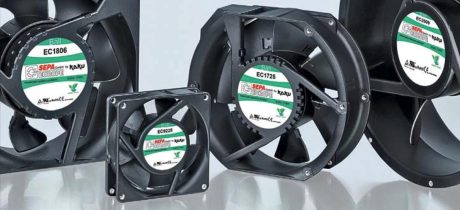Air Revolution

Fans with electronic commutation for AC networks
AC fans have existed as we know them today, with squirrel-cage or capacitor motors, almost unchanged for more than half a century. At the end of the 1960s, with the birth of semiconductor technology, the first electronically commutated fans (EC fans) for low-voltage DC voltage were developed – with significantly lower power consumption. Today, such fans are standard and are used in very large quantities worldwide. In many applications, however, no DC voltage source is available, which is why these fans have not been able to establish themselves there despite their advantages.
In 2005, the European Union agreed to reduce CO2 emissions by 20% by 2020 and by as much as 30% by 2030 as part of the Kyoto Protocol. The ErP Directive (Energy- Using Products Directive) prescribes for the first time targets for saving the power consumption of air-conditioning and refrigeration equipment. These directives have been continuously adapted to the state of the art and tightened (2013 and 2015).
AC fans have existed as we know them today, with squirrel-cage or capacitor motors, almost unchanged for more than half a century. At the end of the 1960s, with the birth of semiconductor technology, the first electronically commutated fans (EC fans) for low-voltage DC voltage were developed – with significantly lower power consumption. Today, such fans are standard and are used in very large quantities worldwide. In many applications, however, no DC voltage source is available, which is why these fans have not been able to establish themselves there despite their advantages.
In 2005, the European Union agreed to reduce CO2 emissions by 20% by 2020 and by as much as 30% by 2030 as part of the Kyoto Protocol. The ErP Directive (Energy- Using Products Directive) prescribes for the first time targets for saving the power consumption of air-conditioning and refrigeration equipment. These directives have been continuously adapted to the state of the art and tightened (2013 and 2015).








